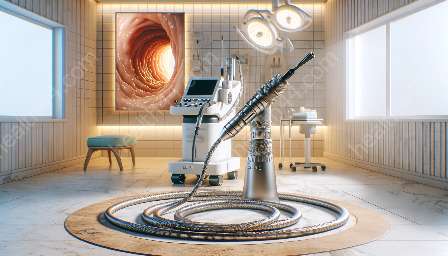Arthroscopes are innovative medical devices used in the field of arthroscopic surgery to diagnose and treat joint-related conditions. They are compatible and share similarities with endoscopes, playing a crucial role in modern medical practices.
The Role of Arthroscopes in Modern Medicine
Arthroscopes have transformed the way joint-related injuries and conditions are diagnosed and treated in the medical field. These advanced instruments allow for minimally invasive procedures in orthopedic surgeries, providing better visualization and improved precision in treating joint-related issues. Arthroscopic surgery, enabled by arthroscopes, has significantly reduced patient recovery time and post-operative complications, making it a preferred choice by both patients and surgeons.
Understanding Arthroscopes and Endoscopes
Endoscopes and arthroscopes share similarities in their design and functionality. While endoscopes are used for examining and diagnosing a wide array of internal organs and systems within the body, arthroscopes are specifically designed for joint-related procedures. Both devices consist of a flexible tube with an attached camera and light source, allowing for visualization and manipulation of tissues without the need for extensive surgical incisions.
The compatibility between arthroscopes and endoscopes lies in their shared technology and the use of advanced optics and imaging systems. This compatibility allows for the interchangeability of certain components, contributing to the versatility and cost-effectiveness of these medical devices and equipment.
The Technological Advancements in Arthroscopes
With the rapid pace of technological advancements in the medical field, arthroscopes have evolved to incorporate high-definition imaging capabilities, improved maneuverability, and enhanced diagnostic features. These advancements enable surgeons to achieve greater precision and accuracy in their procedures, leading to better patient outcomes and reduced recovery time. The incorporation of advanced imaging modalities, such as 3D visualization and augmented reality, further enhances the capabilities of arthroscopic procedures.
Arthroscopes and Patient Care
The use of arthroscopes aligns with the growing emphasis on patient care and the pursuit of minimally invasive treatment options. By offering less invasive surgical techniques, arthroscopes contribute to reduced tissue trauma, minimized scarring, and faster rehabilitation, all of which are essential components in promoting the overall well-being and recovery of patients.
The Future of Arthroscopic Technology
As medical technology continues to advance, the future of arthroscopic technology holds great promise. The ongoing integration of artificial intelligence, robotics, and machine learning in arthroscopic procedures is poised to further revolutionize the field of orthopedic surgery. These advancements aim to enhance surgical precision, optimize recovery outcomes, and expand the scope of conditions that can be effectively treated through arthroscopic interventions.
In conclusion, arthroscopes represent a vital component of advanced medical devices and equipment, playing a pivotal role in the diagnosis and treatment of joint-related conditions. Their compatibility with endoscopes, coupled with ongoing technological innovations, ensures that arthroscopic surgery remains at the forefront of modern medical practices, positively impacting patient care and the field of orthopedic surgery.


